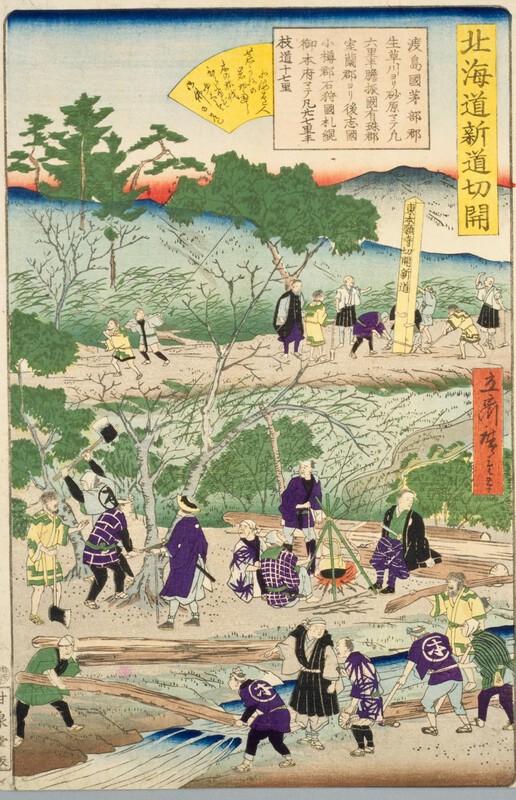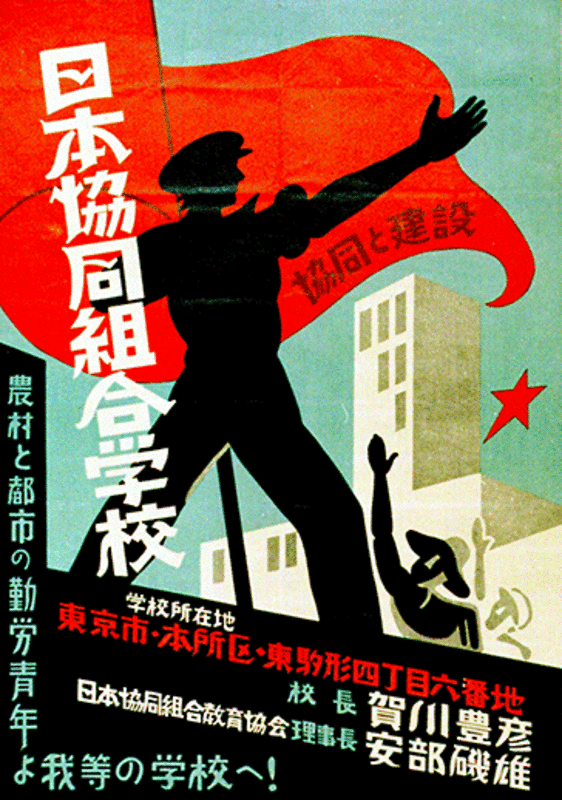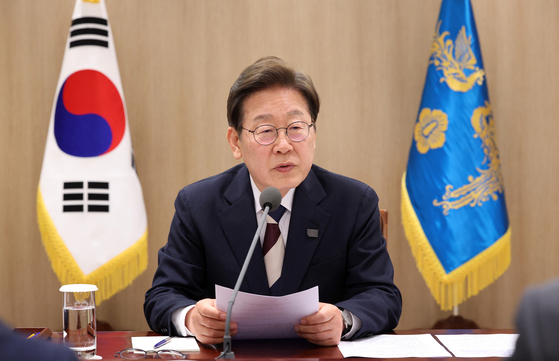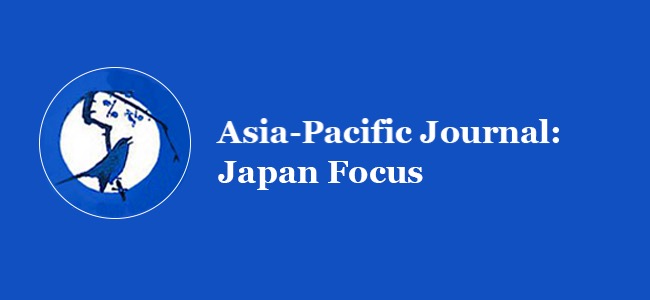Abstract: This article explores South Korean President Lee Jae-myung’s foreign policy priorities during his first 50 days in office, in the context of the political and economic crises in the country leading up to and following the impeachment of former president Yoon Suk Yeol. It also examines what we might expect moving forward for the administration in part by delving into the legacies of past liberal presidents.
Keywords: foreign policy, domestic political legitimacy, alliance management, U.S.-China competition, East Asian regional order
Since winning the special election held on June 3, South Korean President Lee Jae-myung has spent much of his first 50 days in office assembling key members of his administration. True to his pledge of pursuing a more “pragmatic” foreign policy, Lee’s team largely consists of veteran diplomats and career bureaucrats with vast policy experience, such as National Security Advisor Wi Sung-lac and Minister of Foreign Affairs Cho Hyun. As a member of the opposition party, Lee had been a vocal critic of his predecessor and now-impeached former president Yoon Suk Yeol’s “values-based diplomacy,” which sought to define South Korea’s foreign policy priorities in ideological terms—democracy and anti-communism. Under Yoon, Seoul aligned closer with the United States, Japan, and the Quad on various security and economic issues. Critics saw this as drawing South Korea back into a new regional Cold War, while provoking North Korea, emboldened by its ongoing nuclear weapons development and newfound security cooperation with Russia, and alienating China, a key trading partner.
One of President Lee’s first foreign policy moves was the reversal of some hardline trends in Yoon’s North Korea policy. For example, Seoul recently halted the aggressive dissemination of propaganda messages toward the North on loudspeakers and pamphlets at the border. The South Korean government, in a goodwill gesture toward Pyongyang, also returned six North Koreans who had drifted at sea southward across the border. Such decisions were largely expected of a president representing the liberal-leaning Democratic Party and have predictably led to comparisons with the other two liberal presidents in recent South Korean history, Moon Jae-in (2017-2022) and Roh Moo-hyun (2003-2008).
Precedents, perils, and promise in Lee Jae-myung’s foreign policy
Some have observed that Lee Jae-myung, similar to Roh and Moon, does not have a lot of foreign policy or global experience. This is in sharp contrast to other former presidents, such as Park Geun-hye (2013-2017), Lee Myung-bak (2008-2013), and Kim Dae-jung (1998-2003), who had all lived or done business abroad. Seen as a potential weakness, it has sometimes led to fears of naïve, principled stances on complex regional and global issues. In the past, Roh had been criticized for his straight-talking ways on South Korea-U.S. relations, which garnered him the moniker of being an “anti-American” president and affected his ability to manage alliance cooperation both domestically and bilaterally.[1] Perhaps in recognition of such concerns, as a candidate, Lee Jae-myung gave an exclusive interview to Time magazine in May 2025, leading up to the presidential election in June, stating very clearly his intent to stay on the course of strengthening alliance ties with the United States.[2]
An even more obvious parallel is that of former President Moon Jae-in, who, as a Democratic Party candidate, also took office after winning a special election, held in May 2017, following the impeachment of Park Geun-hye. Moon’s foreign policy agenda centered around rapprochement with North Korea as well as “righting the wrongs” of history in South Korean politics, including the two decades of authoritarian rule under Park Chung Hee, Park Geun-hye’s father. This latter focus on victims’ justice and redress, in particular, increased diplomatic tensions with Japan due to domestic political contestation over compensation for victims during the era of Japanese colonial rule over the Korean peninsula. Given Lee’s track record of heavily criticizing Yoon for being a “puppet” of Japan, there were fears of a return to another tense era in Korea-Japan relations. However, Lee was quick to describe bilateral relations as “inseparable” akin to “neighbors who share a front yard.”[3] Meeting with Japanese Prime Minister Ishiba Shigeru on the sidelines of the G7 meeting in Canada in June, he vowed to strengthen bilateral economic ties as well as trilateral cooperation with the United States. In a public statement, the Japanese Foreign Ministry revealed that “the two leaders welcomed the meaningful exchange of views in person following the telephone talks shortly after President Lee’s assumption of office, and concurred that they would continue to communicate closely between the two governments including through the two leaders’ ‘shuttle diplomacy.’”[4]
That Lee has shifted from his more progressive views to a thoroughly pragmatist stance has been widely noted in the media and in expert commentaries. But it is important to keep in mind that such an about-face by a candidate-turned-leader is itself not new in politics—in South Korea or elsewhere. Skepticism and speculation about Lee’s “sudden” pragmatism should be further tempered by past precedents. And yet, it is also worth mentioning that expedient political decisions can come with perilous consequences. When President Roh sought to course-correct from his earlier “pro-autonomy” stance and sent troops to Iraq in support of American troops and moved forward on a controversial free trade agreement with the United States (known as KORUS FTA), he faced harsh criticism from his supporters. A decade later, President Moon worked closely with the Trump administration on engaging Pyongyang. He also reversed his earlier stance by allowing the deployment of a missile defense system on South Korean soil in an attempt to strengthen alliance cooperation, which prompted severe economic retaliation from China and loss of domestic political support.
Important as these parallels and precedents are, Lee Jae-myung faces a very different global and domestic political context. First of all, the second Trump administration’s announcement of “Liberation Day” tariffs has sent global shockwaves and made tariff negotiations priority number one for many of its trading partners. In South Korea, key economic indicators had already plummeted amidst the short-lived martial law declaration and subsequent political uncertainty, and much of the campaigning leading up to the June election revolved around economic issues. There are high hopes placed on—and perhaps more of a grace period allowed for—the incoming Lee government, given the globally shared sense of economic crisis.
Second, President Lee faces less of a divisive political climate on foreign policy than has been typically true in the past. Amidst the chaos and political vacuum since December 2024, South Korean public attention has naturally been focused on Yoon’s impeachment trial, the June election, and the faltering economy. During the election cycle, voters and observers alike bemoaned the lack of meaningful domestic or foreign policy debate. Nor did the two presidential candidates, Lee Jae-myung and Kim Moon-soo, clearly distinguish themselves in terms of their foreign policy stances. On the contrary, there was quite a bit of consensus on the need for autonomous defense and security capabilities within the structure of the military alliance with the United States, the significant role played by U.S. troops on the Korean peninsula, and the prioritizing of economic recovery and negotiating the tariffs imposed by U.S. President Donald Trump. Any discernible differences were slight; on the issue of nuclear weapons, for example, Lee opposed them and Kim declared his intent to consider their development within the structure of alliance cooperation. Public opinion polls have been inconsistent as well, depending on the framing of the question, and subject to interpretation. For instance, recent reports have indicated that 70% of South Koreans support the development of nuclear weapons, but that support rate drops to less than 30% if respondents are asked to consider various costs.[5]
Given this moment of economic and political crisis, the more apt comparison might be with another liberal president from further back in history, Kim Dae-jung, who was elected as president amidst the Asian Financial Crisis, or the “IMF Crisis,” as it is better known in South Korea. Despite adverse circumstances, Kim was able to pitch himself as the “president who is ready” (junbidoen daetongryeong) and immediately embarked on “sales diplomacy” to breathe life back into the South Korean economy. Building on high approval ratings, he unveiled a new policy of engagement toward North Korea (dubbed the “Sunshine Policy”), for which he won the Nobel Peace Prize in 2000, and was able to initiate a new era of Korea-Japan relations in close cooperation with his counterpart in Japan, Prime Minister Obuchi Keizo, who was known as a moderate and a skilled consensus-builder. Just how much President Lee will find his own way, as he tries to turn crisis into opportunity, will depend on the following short-term, medium-term, and longer-term factors: the outcome of the ongoing tariff negotiations; Seoul’s ability to balance bilateral, regional, and global relationships; and maintaining sufficient political support and legitimacy in order to secure maneuvering room during moments of foreign policy crisis.
How much Lee-way?
The first test for Lee’s self-proclaimed “pragmatic” foreign policy is sure to be the tariff negotiations. In April, Washington levied 25% “reciprocal” tariffs on key South Korean industries, including automobiles, steel, and aluminum. The effects have already been keenly felt, as Hyundai Motors just announced a drop in profits in the second quarter, 16% less than last year, despite strong sales (7.3% increase compared to the same quarter in the previous year).[6] With the August 1 deadline looming, and trying to make up for time lost during domestic political turmoil, South Korean government officials have been scrambling to set up meetings with their American counterparts. The terms of negotiation in recent settlements are being closely studied, and Japan’s deal, signed on July 23, may serve as a forbidding precedent. The South Korean government is reportedly putting together an investment package totaling $100 billion from a consortium of top industries, including Samsung, SK, Hyundai Motors, LG, and Hanhwa.[7] This is on top of Hyundai’s announcement in March that it would invest $21 billion in the U.S. automobile industry and the South Korean public gas utility’s long-term commitment to purchase LNG in Louisiana. Still, it is nowhere near Japan’s announcement of a $550 billion investment, and the Japanese deal also includes the further opening of its rice market and reduced safety inspections for American automobile imports. U.S. Secretary of Commerce Howard Lutnick has reportedly asked Seoul for $400 billion in investments, and Trump has publicly stated his desire for opening up the world’s agricultural markets. In fact, recent deals with Japan, Vietnam, Indonesia, and the Philippines have all involved removing barriers to American agricultural products.[8] Australia also just announced that it will ease American beef import restrictions.[9]
Compared to Japan, South Korea has much less to offer, given that it is already the largest importer of American beef and has already removed most tariffs on American goods since the 2007 free trade agreement. In 2018, moreover, the Trump administration had successfully pushed South Korea to allow more American car imports in a revision of the terms of that agreement.[10] The Lee administration, until now, has treated rice and beef as “red lines” that need to be protected. In light of recent events, however, the Blue House has just announced that it will now consider agriculture, in addition to investments in shipbuilding and semiconductors, as part of tariff negotiations. Officials are reportedly discussing the possibility of expanding imports of corn and reducing safety inspection standards for apples and other fruit from the United States.[11] But the U.S. cattle industry has long wanted to remove South Korea’s import restrictions on beef over 30 months old, a result of the 2008 agreement, leading to speculation that Seoul may have to capitulate further.
Needless to say, President Lee will have to balance his pragmatism with the potential for political backlash. In 2007 and 2008, Presidents Roh Moo-hyun and Lee Myung-bak both faced widespread protests during the negotiation and ratification of the free trade agreement with the U.S. A key difference between then and now is that this is not specific to bilateral relations and tariff negotiations are a shared global problem. Moreover, bilateral tensions in the mid-2000s were at an all-time high not only because of the FTA deal but due to the politicization of alliance cooperation due to the death of two girls during a U.S. military exercise and the controversial decision to dispatch South Korean troops to Iraq in support of American war operations. Still, it is unclear just how much that red line can be compromised without provoking major blowback. On the other hand, if Lee is able to walk away with a modicum of success in tariff negotiations, it may set him up for an extended honeymoon period with much foreign policy leeway, similar to the early years of the Kim Dae-jung presidency.
Another area where we can expect to see Lee’s pragmatism be challenged is the perennial quest facing small to medium-sized countries in Asia of navigating the increasingly competitive U.S.-China rivalry. Each South Korean president in the post-Cold War era has had to “balance” ties with the U.S. and China as well as bilateral alliance relations with the United States and multilateral trade relations with Asian neighbors. On the campaign trail, Lee repeatedly emphasized his commitment to the status quo—that is, cultivating close ties with China within the fundamental framework of alliance cooperation. He has stated that South Korea should not be forced to choose between the U.S. and China: “Cooperation with the United States and Japan is essential. But we should not put all our eggs in one basket”.[12]
Some factors that may complicate this balancing act are future burden-sharing negotiations with the United States, relations with Japan, and contingencies involving Taiwan or North Korea. It is expected that Trump will ask allies to pay more of shared defense costs. Trump administration officials may also use the complete withdrawal of U.S. troops from Korea as bargaining leverage. Further, Washington may demand a clear stance from Seoul in its strategic competition with China and seek to incorporate the U.S. Forces in Korea (USFK) as part of a broader Indo-Pacific strategy. So far, Lee has shown flexibility and an attitude of accommodation in his dealings with the U.S., Japan, and other world leaders. His future maneuvering room will depend on the degree of pressure from the U.S., the state of the South Korean economy, and other domestic political constraints. He can also help himself by building wide coalitions of support domestically and regionally, through bilateral and multilateral partnerships with partners in East Asia and elsewhere. In the aftermath of the Asian Financial Crisis, the South Korean government launched the East Asian Vision Group (EAVG) to pursue regional economic cooperation, institutionalized collaboration, and to expand the role and influence of regional actors.[13] Such multilateral regional institutions can serve as a bulwark and mediator in tempering external and internal rivalries.
The final and third factor that could affect Lee’s foreign policy direction has to do with domestic political constraints and the amount of maneuverability—or vulnerability—he will face throughout his presidency. Despite his early successes, Kim Dae-jung swiftly succumbed to lower approval ratings and the onset of a lame-duck period, caused largely by the single-term rule in South Korea. For now, Lee Jae-myung has two things going for him. One is that he won convincingly with 49.4% of the votes, compared to Kim Moon-soo’s 41.1%, in an election that had record-breaking turnout at 79.4%. In the meantime, Yoon’s martial law declaration has further divided the People Power Party (PPP), which had already been weakened from corruption scandals, bickering among party leaders and factions, and a crushing loss in the April 2024 general election.[14] Taking responsibility for his loss in the presidential election, Kim Moon-soo has stepped down as party leader, and the PPP remains fractured and ineffective as an opposition party, unable to derail or put pressure on the ruling party. This will buy President Lee valuable time and space to put out multiple fires and make headway on his policy initiatives.
Perhaps more importantly, he has the full support of the ruling Democratic Party, and there are no signs of major internal fissures yet. Compared to former liberal presidents, he has less of an activist foreign policy contingent or progressive base to cater to. Given weak inter-party competition and lack of internal fragmentation, President Lee faces far less domestic political constraints, compared to many of his predecessors. The question is how long the Left will stay united, the Right will remain rudderless, and whether or not President Lee will be able to avoid populist and extremist impulses to maintain credibility with the public. Since the 2022 presidential election, which he narrowly lost to Yoon, Lee has painted himself as a vocal anti-Yoon alternative in South Korean politics.[15] This tactic may have worked in a political landscape increasingly marked by polarization and frustration with Yoon’s policies, but it is now Lee’s turn to govern and restore trust in the government as well as revive the economy. His ambitious agenda to jumpstart economic growth and improve the lives of ordinary citizens can only work if he has sustained political support and his legitimacy remains intact. This is more likely to be achieved with a politics of restraint and recalibration, rather than retribution and reversal. The next 50 days will give us more clues to predict the rest of his presidency.
Notes:
[1] Anthony Spaeth, “Roo Moo Hyun Takes Center Stage,” Time, March 3, 2003. Available at https://time.com/archive/6893943/roh-moo-hyun-takes-center-stage/.
[2] Charlie Campbell, “Exclusive: Lee Jae-myung Aims to Steer South Korea Past Its Moment of Crisis and Mounting Challenges,” Time, May 29, 2025. Available at https://time.com/7289366/lee-jae-myung-south-korea-president-trump-economy-challenges-interview/.
[3] Hyunsu Yim and Kantaro Komiya, “South Korea’s Lee Cites ‘Inseparable’ Relationship with Japan in First Summit,” Reuters, June 18, 2025. Available at https://www.reuters.com/world/americas/south-koreas-lee-tells-japan-countries-should-cooperate-amid-trade-challenges-2025-06-17/.
[4] Ministry of Foreign Affairs of Japan, “Japan-ROK Summit Meeting,” June 17, 2025. Available at https://www.mofa.go.jp/a_o/na/kr/pageite_000001_01062.html.
[5] Jeong Sang-mi, “Hangukmin eui jache haekmujang jiji yeonron bunseok [An Analysis of South Korean Citizens’ Attitudes toward Nuclearization],” Analysis of Key Global Issues, Institute of Foreign Affairs and National Security, January 2, 2024. Available at https://www.ifans.go.kr/knda/ifans/kor/pblct/PblctView.do?csrfPreventionSalt=null&pblctDtaSn=14265&menuCl=&clCode=P01&koreanEngSe=KOR&pclCode=&chcodeId=&searchCondition=searchAll&searchKeyword=&pageIndex=1. See also Toby Dalton, Karl Friedhoff, and Lami Kim, “Thinking Nuclear: South Korean Attitudes on Nuclear Weapons,” Chicago Council on Global Affairs, February 2022. Available at https://globalaffairs.org/research/public-opinion-survey/thinking-nuclear-south-korean-attitudes-nuclear-weapons.
[6] Pak Yeong-wu, “Gwanse shoku sijae doetta” [The Tariff Shock Has Begun],” JoongAng Ilbo, July 24, 2025. Available at https://www.joongang.co.kr/article/25354049.
[7] Yi Bon-yeong, Pak Su-ji, and Eom Ji-weon, “Hanguk, Dae Mi tuja gyehoek geulgeo moa 1 cheon eok dalleo in de ‘mwol deo hal su isseulji’ [Korea, ‘what more can it do’ after cobbling together $100 billion in U.S. investments],” Hangyoreh, July 24, 2025. Available at https://www.hani.co.kr/arti/economy/economy_general/1209819.html.
[8] Kim Weon, “Bessent e Rubio mannamdo bulbal [Cancelled Meetings with Bessent and Rubio],” JoongAng Ilbo, July 24, 2025. Available at https://www.joongang.co.kr/article/25354093.
[9] Rod McGuirk, “Australia to Reduce US Beef Import Restrictions Denounced by Trump as a Ban,” AP News, July 24, 2025. Available at https://apnews.com/article/beef-australia-united-states-tariffs-trump-collins-84ca0010c3f1c978e809367086d948c2.
[10] Lydia DePillis and Ashley Ahn, “South Korea Jockeys for a Deal With Trump at Least as Good as Japan’s,” The New York Times, July 24, 2025. Available at https://www.nytimes.com/2025/07/24/business/south-korea-trump-tariffs.html.
[11] Pak Su-ji, “Daetongryeong sil, ‘Nongsanmuldo hyeopsang daesang’ [Agriculture is Now Up for Negotiation, Says President’s Office],” Hangyoreh, July 25, 2025. Available at https://www.hani.co.kr/arti/economy/economy_general/1210055.html.
[12] Choe Sang-Hun, “Where South Korea’s New President Stands on Trump and North Korea,” The New York Times, June 3, 2025. Available at https://www.nytimes.com/2025/06/03/world/asia/south-korea-lee-jae-myung-policy.html.
[13] Kim Dae-jung, “Regionalism in the Age of Asia,” Global Asia 1, 1 (September 2006). Available at https://www.globalasia.org/v1no1/cover/regionalism-in-the-age-of-asia_kim-dae-jung.
[14] Kyle Pope, “South Korea’s Legislative Election: What Went Wrong for the PPP?” The Diplomat, April 11, 2024. Available at https://thediplomat.com/2024/04/south-koreas-legislative-election-what-went-wrong-for-the-ppp/.
[15] Kayla Orta, “A ‘Pragmatic’ Foreign Policy Agenda: What’s Next for South Korea’s New President?” Stimson Commentary, June 13, 2025. Available at https://www.stimson.org/2025/a-pragmatic-foreign-policy-agenda-whats-next-for-south-koreas-new-president/ (accessed on June 20, 2025).





